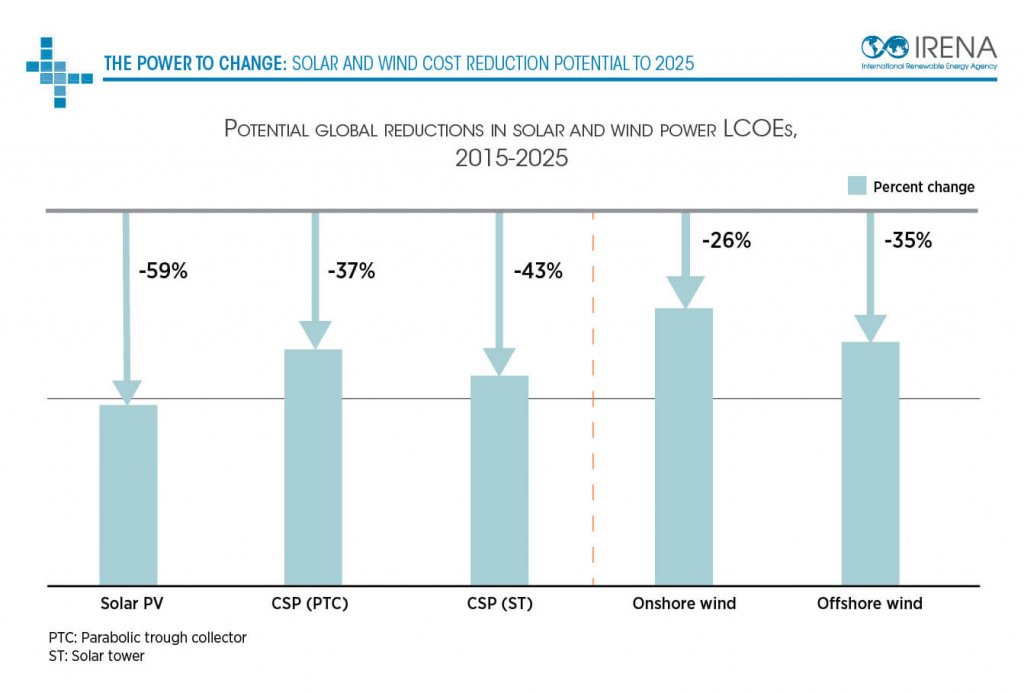
Renewable Energy
The average costs for electricity generated by solar and wind technologies could decrease by between 26% and 59% by 2025, according to a report released today by the International Renewable Energy Agency (IRENA).
The report, The Power to Change: Solar and Wind Cost Reduction Potential to 2025, finds that with the right regulatory and policy frameworks in place, solar and wind technologies can continue to realize cost reductions to 2025 and beyond.
It estimates that by 2025, average electricity costs could decrease 59% for solar photovoltaics (PV), 35% for offshore wind, and 26% for onshore wind compared to 2015. By 2025, the global average cost of electricity from solar PV and onshore wind will be roughly 5 to 6 U.S. cents per kilowatt hour.
“We have already seen dramatic cost decreases in solar and wind in recent years and this report shows that prices will continue to drop, thanks to different technology and market drivers,” said IRENA Director-General Adnan Z. Amin. “Given that solar and wind are already the cheapest source of new generation capacity in many markets around the world, this further cost reduction will broaden that trend and strengthen the compelling business case to switch from fossil fuels to renewables.”
Since 2009, prices for solar PV modules and wind turbines have fallen roughly 80% and 30% to 40%, respectively. With every doubling of cumulative installed capacity, solar PV module prices drop 20% and the cost of electricity from wind farms drops 12%, due to economies of scale and technology improvements.

Dramatic price drops for solar and wind electricity set to continue as cost reduction drivers shift.
Importantly, for policy makers, cost reductions to 2025 will depend increasingly on balance of system costs (e.g. inverters, racking and mounting systems, civil works, etc.), technology innovations, operations and maintenance costs, and quality project management. The focus in many countries must therefore shift to adopting policies that can reduce costs in these areas.
“Historically, cost has been cited as one of the primary barriers to switching from fossil-based energy sources to renewable energy sources, but the narrative has now changed,” said Amin. “To continue driving the energy transition, we must now shift policy focus to support areas that will result in even greater cost declines and thus maximize the tremendous economic opportunity at hand.”
Filed Under: News




